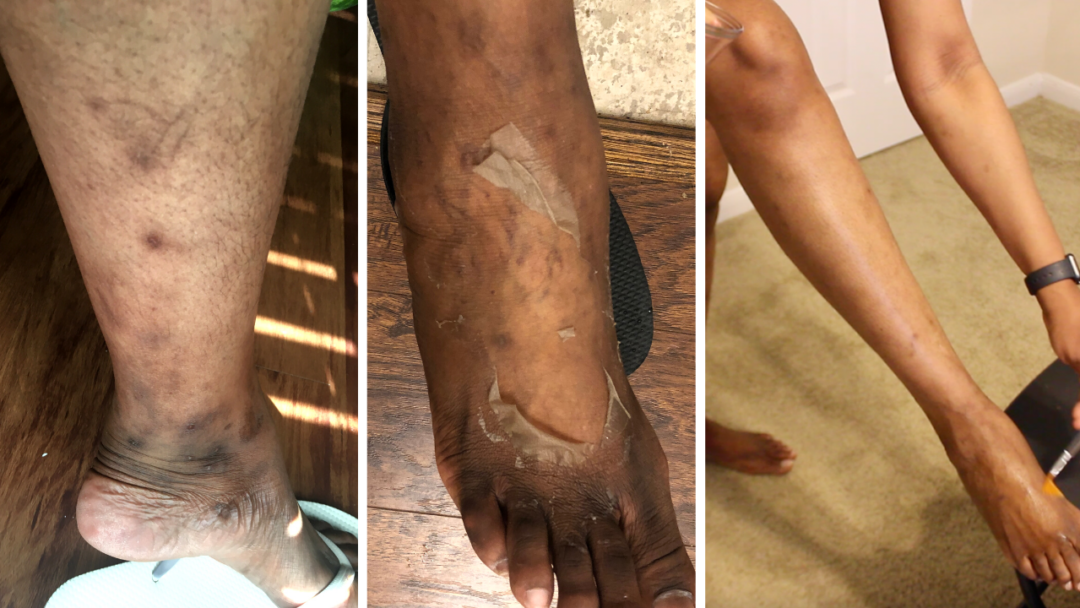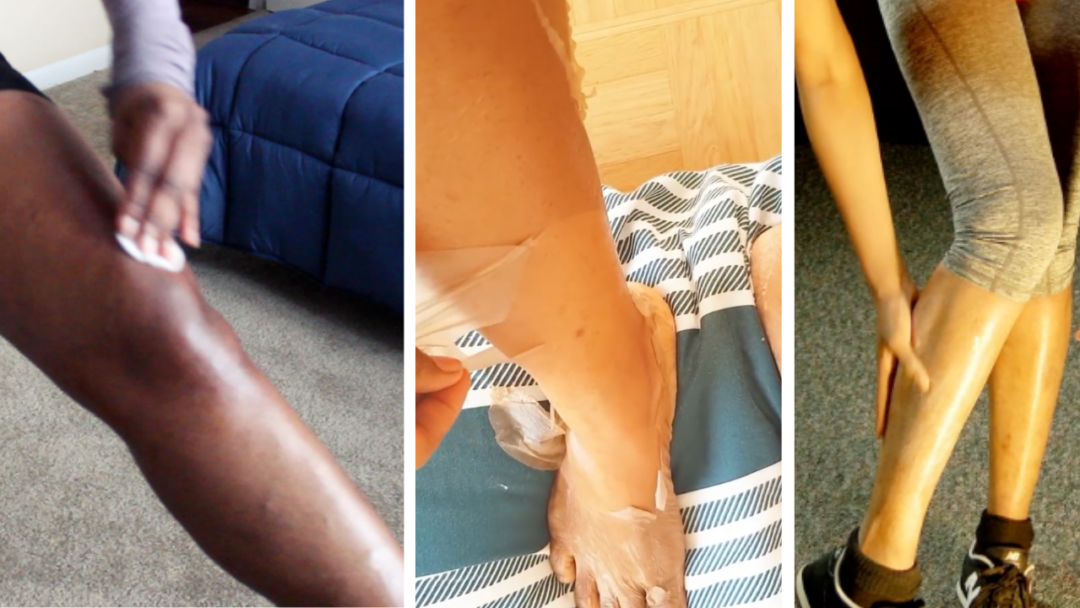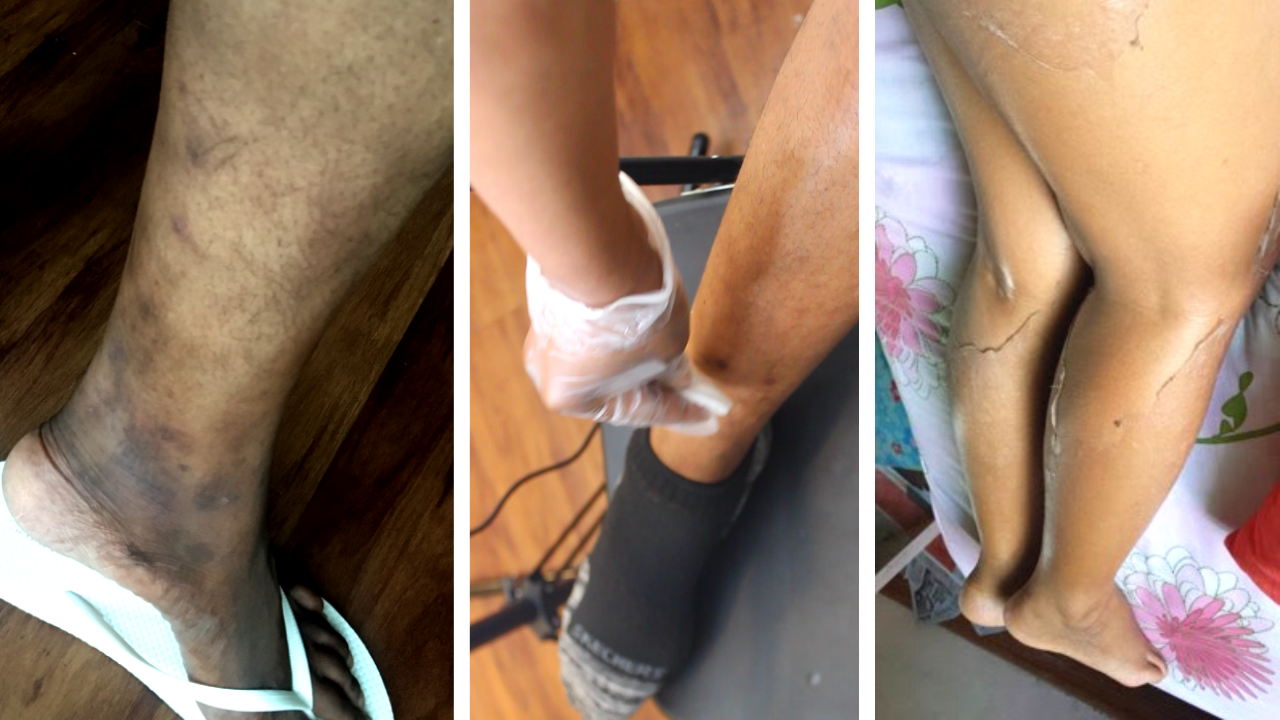Script:
How to remove scars on legs fast with chemical peels, hi everyone in today’s video we’ll be covering the different strengths of peels and the best peels for your skin concern or skin type we’ll be looking at how I administer a chemical peel on my face and on my body what to do before and after a peal and products that will make your results ten times better number one, types, there are three main types of peels, light or superficial peels medium depth peels and deep peels for light peels they include glycolic acid 10 to 50 percent, lactic acid 10 to 30 percent, mandelic acid 40 percent and salicylic acid 30 percent, these type of peels can be done at home but you need to have several sessions done before you see significant improvement, it removes the top layer but doesn’t penetrate as deep, next medium depth, these include glycolic acid 70 percent salicylic acid over 30 percent and TCA peal 30 to 50 percent, this is kind of a sweet spot for me because it’s not a deep peel to where I would burn myself but at the same time i can administer and see significant improvement because it penetrates much deeper than the epidermic, it goes to the dermis, at least the top layer of the dermis and it helps with pigmentation issues number three deep peels, these ones are hardcore these need usually a physician not even a professional at the spot, they address anti-aging issues, pigmentation issues but like I mentioned they’re hardcore, they go deep deep into the dermis so be careful well you can’t even do it on your own, next the best chemical peels for your skin concern and or your skin type so if you’re someone who has darker skin if you have dry skin if you have sensitive skin you will benefit from using lactic acid and mandelic acid peels these peels are very gentle if you have acne prone skin or oily skin salicylic acid or jessner peel are two peels that you will find very beneficial for glycolic acid that works for all skin types but if you have super sensitive skin you may want to avoid glycolic acid although it’s very effective and then if you have high pigmentation peels such as TCA, VI peel, cosmelan are great peels.
Now onto demonstration i’m going to be doing my face and my body, the products I’ll be using are gentle cleanser latex free gloves alcohol wipes petroleum jelly to protect chemical peels lactic acid glycolic acid TCA, I’m going to be using TCA for my legs and glycolic acid for my elbows and lactic acid for my face, that’s my bowl and my fan brush my moisturizer, my sunscreen, my cotton rounds and my body lotion, let’s go alright first I’m gonna be cleansing my face, all right so we can get a fresh palette, wipe it off I’m gonna be using alcohol wipes to remove any um residue and all and then I’m gonna be protecting with the petroleum jelly my eyes, my nose, my mouth now I’m gonna be taking the peel just using my fan brush to gently apply it all over my face I’m using 25 percent lactic acid because I don’t want to burn myself, I generally don’t like administering the peel on my face, when I do it has to be a light peel, all right that’s it i’m gonna time myself for this peel I waited about two minutes I believe and then I neutralize it with water, you can neutralize with baking soda as well and then I apply the moisturizer, a gel moisturizer so it can soothe my skin and after my moisturizer, I applied a sunscreen next, I’m going to be demonstrating how I apply it on my legs, I’m doing the same thing cleansing my skin all right I’m going to be using a TCA peel 30% I wouldn’t try this on my face at home, I’m just so scared I don’t want to burn my skin and I use tretinoin anyway so I try to stay away from um strong peels on my face all right I’m applying it on my leg generally, TCA peel can be applied onto so you can use three for about four layers actually in this video I only did two layers and I still got some peeling and that’s it plan it all over this is the first layer, I’m gonna come back for a second later, my problem area is my feet really just really got dark so I’m trying to treat that, if you look at my legs you can see some spots that are still fading but my legs have come a long way for sure all right here I’m just neutralizing the peel although TCA peels self-neutralize so you don’t even need to neutralize them and then I’m applying a soothing body lotion on my legs yeah and that is it for the legs.
Next, what you do before and after a peel. Before the peel, if you go see a specialist or physician they’re gonna have you stop exfoliating one week before your chemical peels, first they’re gonna take your medical history if everything’s fine and they’ll have you stop exfoliating one week before at least one week or about a week before your chemical peel they would also have you stop things like retinoids pigment lighteners and acne medication because these things impact how your skin tolerates the peel right and last products to use to make your results 10 times better if you go see a dermatologist, for example, to get a chemical peel they would put you on retinoids and/or pigment lighteners for four to six weeks before your chemical peel. These medications will help speed up your results right and also as a safety measure things like retinoids help the healing process so when you get a chemical peel it’s kind of like lifting I don’t know like a sheet almost so when your skin peels, then you see fresh new skin. Retinoids and pigment lighteners have been working behind the scenes to ensure that there’s no reproduction of melanin and the skin heals quickly right my friends thank you so much for watching I have one question for you what is your most concerning skin issue these days I want to hear them leave them in the comments section thank you so much for watching I appreciate you all I hope you have a great great week ahead.
F E A T U R E D
▶Tretinoin https://thepigmentedlife.com/product-links/
► Hydroquinone https://thepigmentedlife.com/product-links/
▶ Azelaic acid https://thepigmentedlife.com/product-links/
Chemical Peels
▶ TCA https://bit.ly/3zBlpWq – TCA https://bit.ly/3EHAAif
▶ Glycolic acid https://bit.ly/3GNt3QT -Glycolic acid https://bit.ly/3EHGZtM -Glycolic acid https://bit.ly/3ECibDE
▶ Salicylic acid https://bit.ly/3bxRPGz – Salicylic acid https://bit.ly/3ByYwCN
▶ Lactic acid https://bit.ly/3bB2qjU -Lactic Acid https://amzn.to/3cmOcUJ
▶ Mandelic acid https://bit.ly/3q1NSSY – Mandelic acid https://amzn.to/3cmp40g
▶ Jessner’s peel https://bit.ly/3ByYwCN
Products Used for Chemical Peel Demo
1. Cleanser
2. Latex-free gloves
3. Alcohol Wipes
4. Petroleum jelly
6. Chemical peels:
Lactic acid 25%,
TCA peel 30%
Glycolic acid 35%
7. Cotton rounds
8. Moisturizer
9. Sunscreen
10. Body lotion




